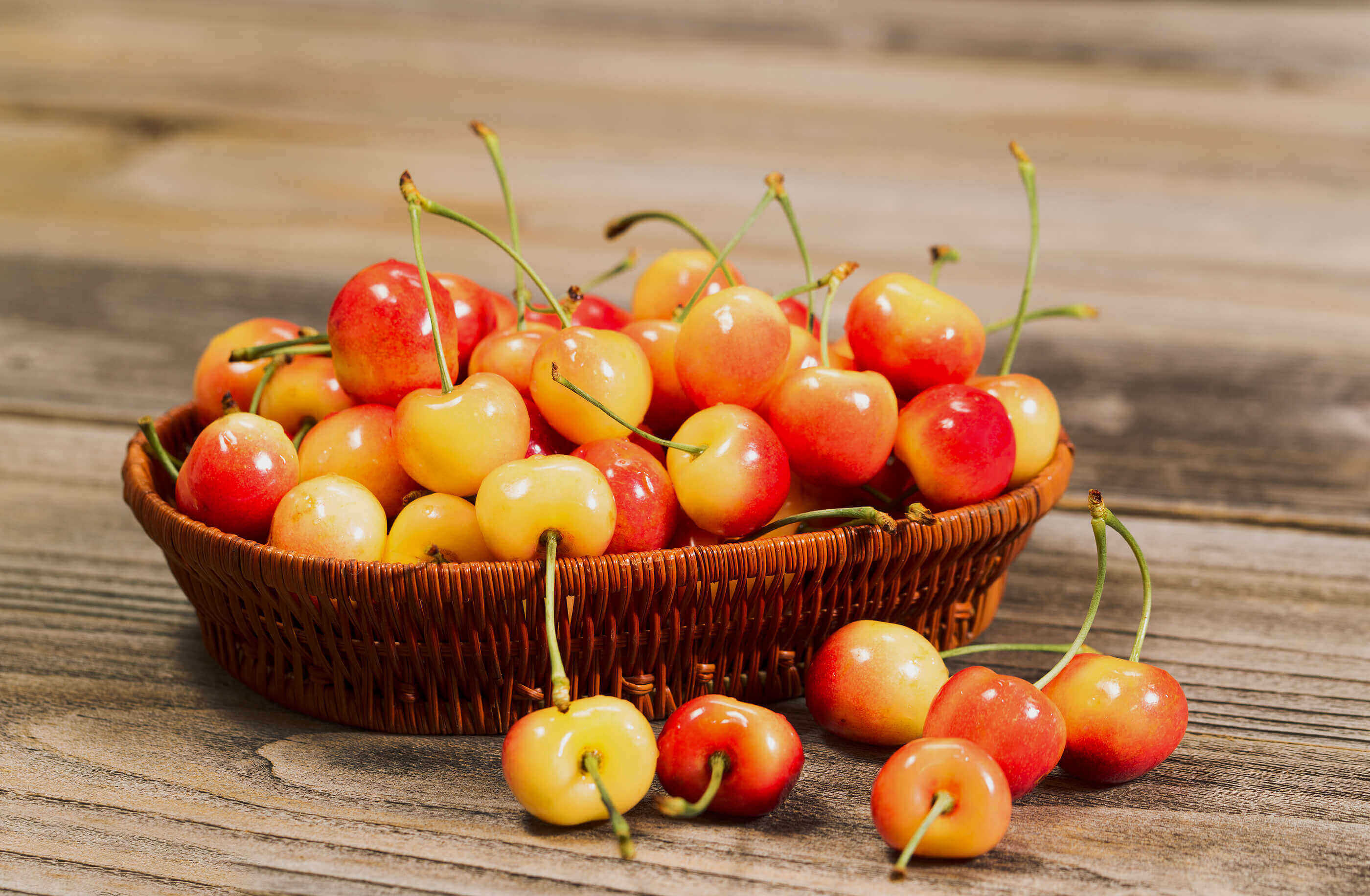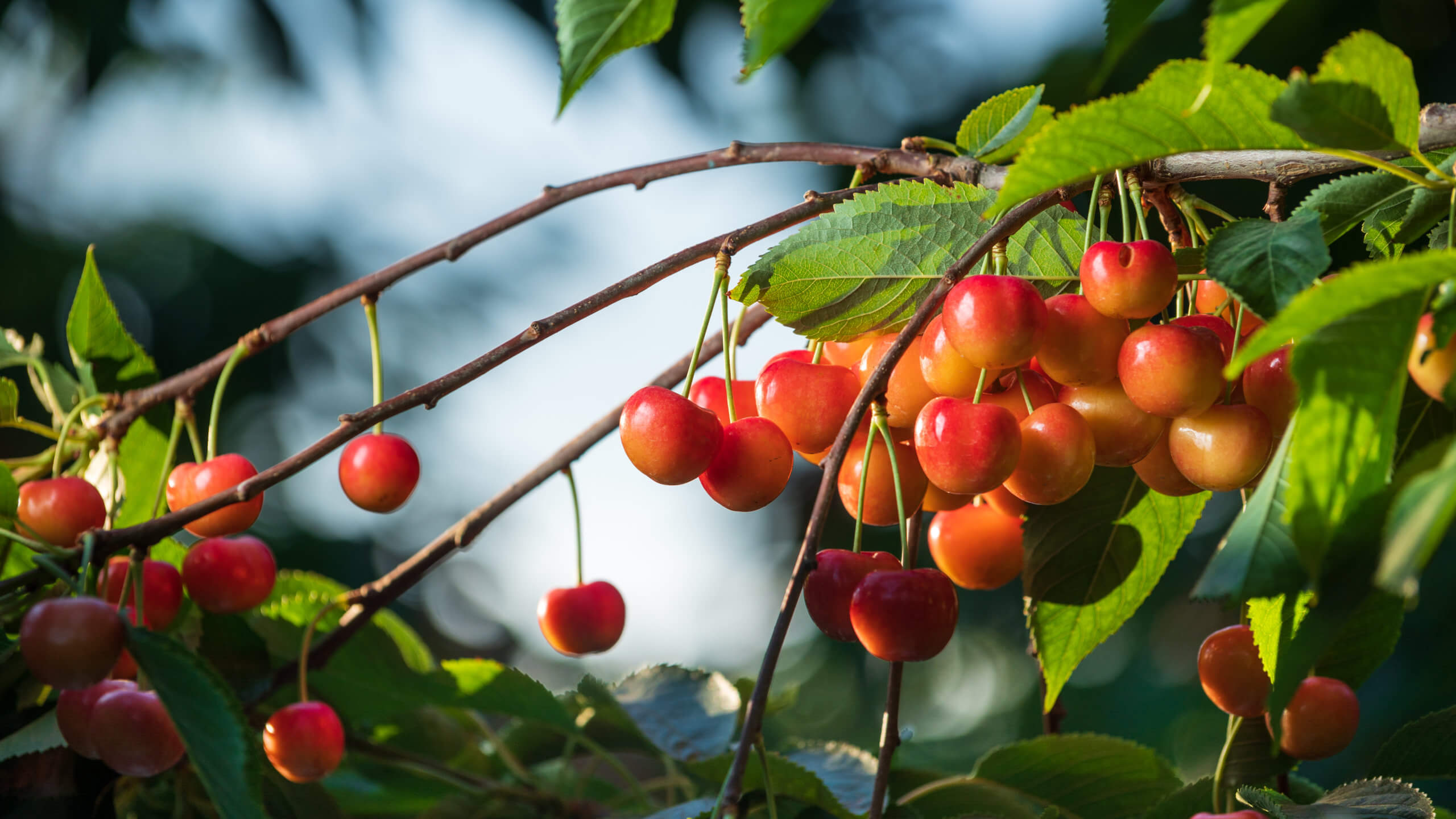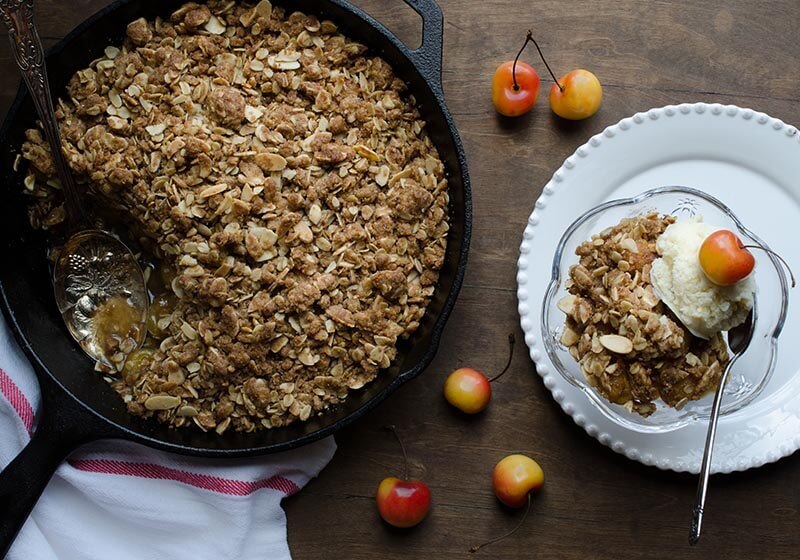7 Secrets of Rainier Cherries
|
Originally published in July 2014; updated May 2022.
Ready for a Few Secrets?
You might be asking what is a Rainier cherry? They’re golden yellow cherries with a perky pink to red blush and a sinfully sweet flavor. A delicate fruit inside and out and a must to devour by the handful during the few short months they are in season. And with National Rainier Cherry Day happening on July 11th, we’re celebrating this delicious cherry variety here by unveiling 7 things you might not know about Rainier cherries.
1. Rainier Cherry = Bing + Van
It still baffles me to think that Bing and Van, two red cherry varieties, were combined to create the golden Rainier cherry that we know and love today. In 1952, that’s exactly what happened when Harold Fogel and other researchers from the Washington Agriculture Experiment Station in Prosser, WA crossed the two well-known red cherry varieties using traditional breeding methods of crossing pollen. It’s rumored that the mother Rainier tree still resides in Prosser!
2. Named After A Mountain
Rainier cherries are large in size, so it’s fitting they were named after our state’s most mammoth mountain. Mt. Rainier sits at an elevation of 14,409 feet and is the highest peak in the Cascade Mountain range.
3. Birds Approve Too
One of the most common problems Rainier cherry growers face are pesky birds snackin’ on the crop. With the fruit’s sweet flavor, you can’t really blame them, but growers go to great lengths to protect their crops from birds. Nets over/around orchards, reflective tape hanging on tree branches, nest boxes, and falcons flying overhead are all ways cherry growers help control bird problems.
 4. Higher Sugars (or Brix) and Larger Size
4. Higher Sugars (or Brix) and Larger Size
This may not be the best kept secret, but Rainier cherries are naturally big and super-sweet. The average Brix is the sugar content of an aqueous solution. One degree Brix is 1 gram of sucrose in 100 grams of solution and represents the strength of the solution as percentage by mass Brix, or sugar levels, range for Rainier cherries is 17° to 23°. That means that one-fifth each cherry is sugar! Don’t let that fool you, there are multiple health benefits of Rainier cherries.
5. Working as a Team
Rainier cherry trees are often planted between dark-sweet cherry trees in orchard rows in order to provide a different pollen source for bees during the important cherry bloom stage. That’s because most cherry varieties need two sources of pollen for their blossoms to be successfully pollinated by bees. Rainier cherry trees are still used as pollinizers today, although here at Stemilt, we plant orchards of Rainiers in order to harvest and ship more of this delicious fruit to supermarkets!
6. Celebrated Nationally
National Rainier Cherry Day happens every July 11th. It’s not well-documented how long this celebration has gone on, but it aligns well with the peak of the Rainier cherry crop in Washington State and is a good time to find the premium Rainier cherry on sale at grocery stores. We hope that your National Rainier Cherry Day is filled with delicious Rainier cherries from Stemilt. They’ll only be in season for a few more weeks!
 7. Fresh Picked to Freshly Eaten
7. Fresh Picked to Freshly Eaten
Rainier cherries are most often eaten fresh, but also make a great ingredient in sweet and savory summer recipes. From appetizers to fancy desserts, there are so many great cherry recipes that feature Rainier cherries as a main ingredient. Get inspiration for using Rainier cherries in new ways on our National Rainier Cherry Day Pinterest board.
Now that you know all about Rainier cherries, tell us, what is your favorite thing about this golden sweet cherry? Do you have any tried and true Rainier cherry recipes or tips? Share with us in the comments below.


 4. Higher Sugars (or Brix) and Larger Size
4. Higher Sugars (or Brix) and Larger Size 7. Fresh Picked to Freshly Eaten
7. Fresh Picked to Freshly Eaten